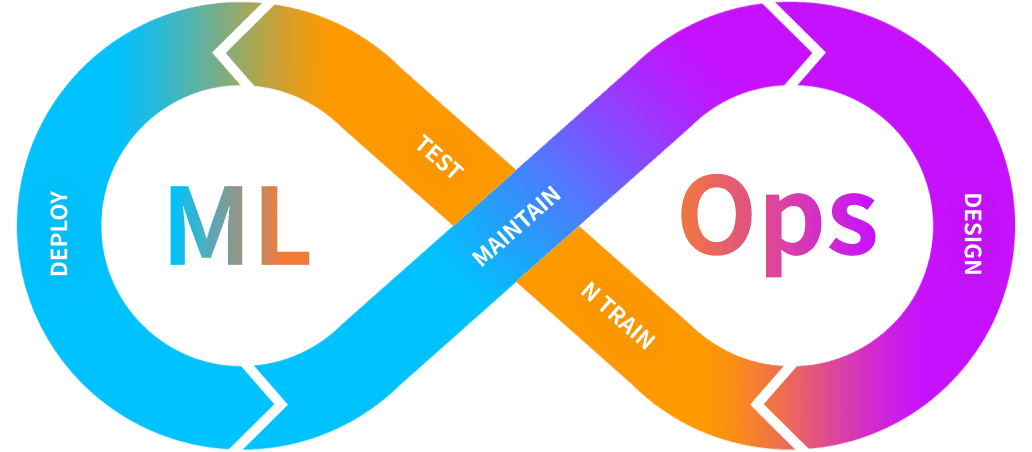ABOUT THE COMPANY

Your AI models won’t deliver value if they never reach production or fail to scale. Many businesses face broken pipelines, reproducibility issues, and manual processes that slow down innovation.
Sound familiar?You’ve likely invested time and resources in data science projects only to see them stall at the deployment stage or become too complex to manage. That’s where we come in.
Our MLOps & AI Lifecycle Management service helps you streamline, automate, and scale every stage of the AI lifecycle from data collection and model training to deployment and monitoring.
Unlike traditional approaches that silo data science and engineering teams, our end-to-end managed framework bridges that gap, ensuring continuous integration, delivery, and governance of your AI systems.
✅ Proven Frameworks: Based on industry best practices (CI/CD for ML, GitOps, and containerization).
✅ Cross-functional Expertise: Our team blends AI engineering, DevOps, and cloud architecture.
✅ Faster Time to Value: Deploy and iterate ML models in days, not months.
Accelerate ML Deployment – Reduce model deployment time by 60–80%.
Automate Workflows – Save hours of manual work with automated pipelines for training, testing, and deployment.
️ Improve Model Governance – Track experiments, versioning, approvals, and audit trails.
Enhance Model Performance – Monitor models in production with drift detection and alerting.
Optimize Costs – Use scalable infrastructure and optimize resource allocation via cloud-native tools.
Ensure Compliance – Implement enterprise-grade security and compliance (GDPR, HIPAA, etc.).
Enterprise Data Science Teams looking to productionize AI models.
CTOs and CIOs seeking to align AI with business goals and ROI.
Startups that need scalable AI deployment without building infra from scratch.
AI-First Companies that require robust monitoring, reproducibility, and compliance.
Our 5-Step MLOps Lifecycle Process:
Assessment & Planning
Understand current AI workflows, identify bottlenecks, and define success metrics.
Pipeline Setup
Build reproducible data & model pipelines using CI/CD for ML.
Infrastructure & Tooling
Implement scalable and secure infrastructure (Kubernetes, MLFlow, Kubeflow, etc.).
Model Deployment & Monitoring
Deploy models via automated triggers with real-time monitoring & drift detection.
Continuous Optimization
Regular updates, re-training, and fine-tuning to maximize long-term model performance.

Our 5-Step MLOps Lifecycle Process:
Assessment & Planning
Understand current AI workflows, identify bottlenecks, and define success metrics.
Pipeline Setup
Build reproducible data & model pipelines using CI/CD for ML.
Infrastructure & Tooling
Implement scalable and secure infrastructure (Kubernetes, MLFlow, Kubeflow, etc.).
Model Deployment & Monitoring
Deploy models via automated triggers with real-time monitoring & drift detection.
Continuous Optimization
Regular updates, re-training, and fine-tuning to maximize long-term model performance.
Here are the 5 Top Most Frequently Asked Questions (FAQs) for Computer Vision Solutions, along with clear, technical yet business-friendly answers:
Computer vision (CV) enables machines to interpret visual data (images/videos) to automate tasks, enhance decision-making, and uncover insights. Key applications:
Quality Control: Detect defects in manufacturing (e.g., scratches, misalignments).
Retail: Cashier-less checkout, shelf analytics (e.g., out-of-stock items).
Healthcare: Analyze X-rays/MRIs for anomalies (e.g., tumors, fractures).
Security: Real-time surveillance (e.g., intruder detection, PPE compliance).
Autonomous Systems: Self-driving cars, drones for inspections.
ROI Example: A manufacturer reduced defect rates by 40% using CV-powered inspection.
| Traditional CV | AI-Powered CV |
|---|---|
| Rule-based (e.g., edge detection) | Learns patterns from data (deep learning) |
| Struggles with variability | Handles complex scenes (e.g., clutter) |
| Limited scalability | Improves with more data |
Example:
Traditional: Barcode scanning.
AI-Powered: Identifying damaged packages in arbitrary orientations.
Minimum: ~1,000–5,000 labeled images per class (e.g., 10K images for 5 defect types).
Optimal: 50,000+ images for complex tasks (e.g., autonomous driving).
Workarounds for small datasets:
Data augmentation (flips, rotations).
Transfer learning (pre-trained models like ResNet, YOLO).
Synthetic data (GANs, 3D simulations).
Pro Tip: Labeling quality (e.g., bounding boxes, segmentation masks) is more critical than quantity.
Edge Devices: Jetson Nano, Raspberry Pi (+ cameras) for real-time processing (e.g., drones).
Cloud GPUs: AWS SageMaker, Google Vertex AI for training heavy models.
Hybrid: Process locally (for latency) + cloud (for scalability).
Cost Range:
Edge: $500–$5,000 per device.
Cloud: $1–$10 per hour (training), $0.01–$0.10 per inference.
Mitigate challenges with:
| Challenge | Solution |
|---|---|
| Lighting variations | Train with diverse lighting data. |
| Occlusions (obstructions) | Use 3D data or context-aware models. |
| Model bias | Audit datasets for diversity (e.g., skin tones). |
| Drift over time | Continuous monitoring + retraining. |
Case Study: A retail CV system achieved 95% accuracy by simulating store lighting in training.
Yes! Most CV solutions:
Support RTSP/IP cameras (e.g., security cameras).
Offer APIs to plug into ERP/SCM systems (e.g., SAP, Oracle).
Run on cross-platform frameworks (OpenCV, TensorFlow Lite).